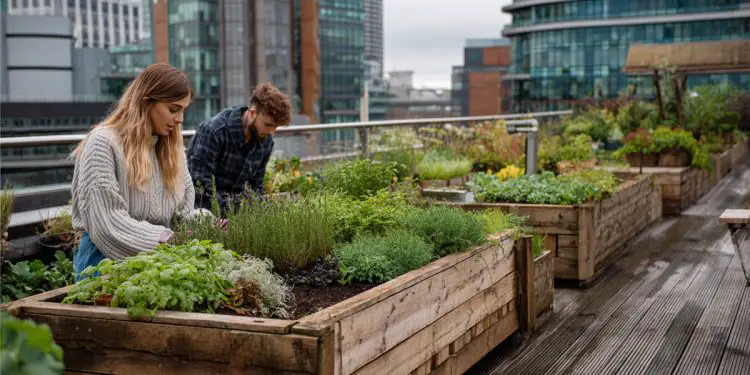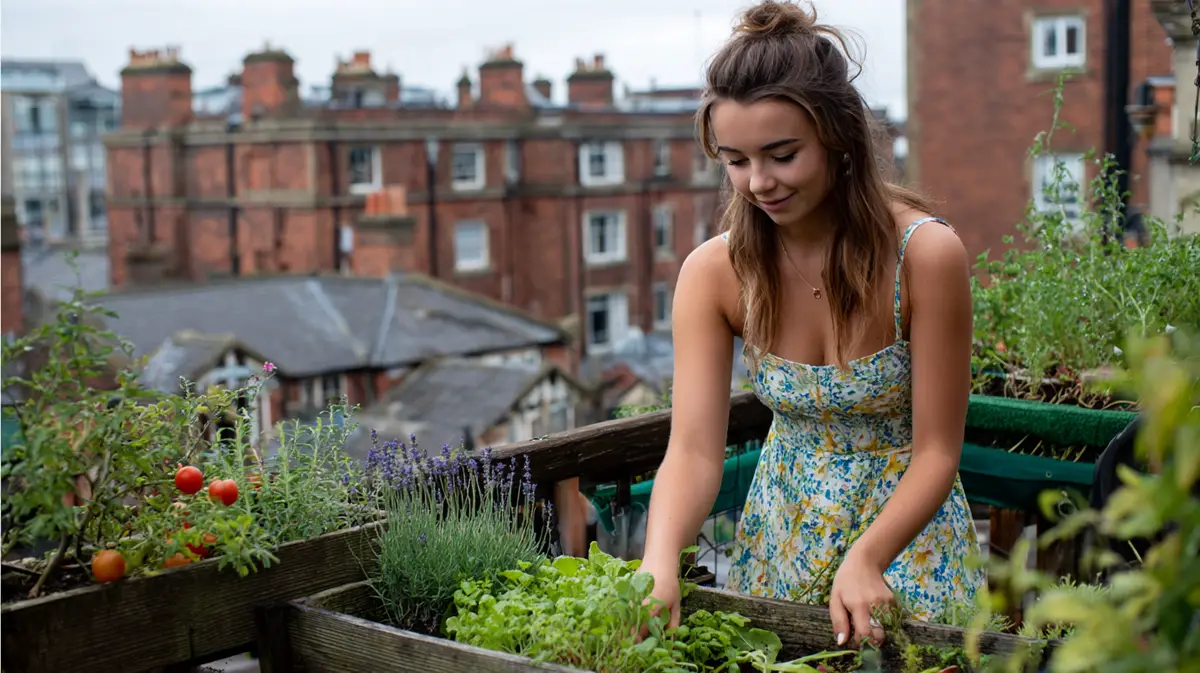The New Green Thumb: How Urban Yorkshire Has Blossomed in the Garden Boom

In cities across Yorkshire, urban gardening has quietly tipped from hobby to movement. From rooftop pots to community allotments, professionals are discovering that growing food and flowers isn’t just for the countryside anymore – it’s a meaningful response to busy city life.
The Allotment Queue Grows
York alone has more than 1,000 people currently on the waiting list for an allotment, a figure that continues to rise as candidates seek space to cultivate.
In Leeds and Sheffield, allotment associations report their waitlists have more than doubled in recent years. NationalPreparednessCommission data show that demand for urban food-growing plots is outpacing supply –driven by a new generation who value fresh produce and green space.
From Balcony to Roof Garden
Not everyone wants, or can get, an allotment. That’s prompted a surge in balcony boxes, window planters and rooftop gardens. On: Yorkshire’s balcony garden feature reflects this shift toward compact, functional design.
At Wellington Place in Leeds, professionals host midday yoga sessions amidst herb beds and wooden planter boxes. “It’s like working on retreat,” says city planner Mia Clarke, tending to her rooftop thyme during a coffee break.
Community Roots Take Hold
Yorkshire’s “Incredible Edible” branches – from Bradford to York – have transformed vacant lots into community veg plots and pollinator zones. These initiatives connect neighbours, reduce food miles and spread horticultural know-how. As one volunteer in Sheffield put it, “You come for the carrots, you stay for the company.”
A Modern Spin on “Dig for Victory”
This wave echoes Britain’s WWII “Dig for Victory” campaign. The Guardian describes how early-20th-century gardens rallied national morale during extreme hardship. Today’s crisis may look different, but the impulse is the same: crisis spurs a return to self-reliance – and that green thumb is part of the QR code for modern resilience.
Young Professionals Find Roots
For urbanites like graphic designer Sam Patel, gardening is both therapy and social capital. His balcony in Sheffield includes pots of salad leaves and indigenous wildflowers. “It means I can eat organic vegetables at home, even though I live in a flat,” he says. “And neighbours stop by to ask for tips.”
Similarly, Leeds-based architect Rachel Lee turned a rooftop terrace into a micro-forest with fruit trees and edible flowers. “It’s not Instagram that motivates me – it’s the feel of the soil, the smell of mint,” she explains. “It keeps me grounded.”
Tending Beyond Soil
But the trend is more than plants and pretty boxes. Urban gardens are being viewed as extensions of lifestyle and well-being. City councils and charity bodies now partner to subsidise horticultural courses on permaculture and composting, promoting environmental literacy alongside hands-on work.
The Business of Green
The urban gardening boom has spawned a small-but-growing economy. Marquee companies such as On: Yorkshire’s edible garden designers are showcasing fully edible front gardens, while local businesses sell garden-ready tool kits, heirloom seeds and eco-friendly planters.
Meanwhile, allotment associations charge modest annual fees (£40‑£60), often eclipsed by private delivery subscriptions. Some neighbourhoods now host “plant swaps” and seed-exchange stalls, reinforcing the communal spirit.
Eco-Conscious and Socially Tuned
These efforts dovetail with wider lifestyle values – cutting food miles, fostering biodiversity and producing mental health benefits. A recent Leeds University study found that community gardening significantly reduced anxiety and loneliness among participants. Even small container gardens showed an uplifting effect on mood and attention.
Challenges in Growth
But barriers remain. Waitlists are long, urban growing areas are finite, and not everyone has access to outdoor space. Local councils are testing ‘micro-allotments’—modest plots fitted into pavement verges or roadside nooks – but these are still emerging.
For renters, permission to grow can be complex. Landlords may object to planters or allotments, and insecurity of tenure makes long-term garden investment risky.
What the Experts Say
- Prioritise perennial planting: it reduces upkeep and boosts soil health.
- Build community: garden groups often share expertise and resources.
- Lofty goals, small wins: a single herb pot can spark curiosity and lead to larger ambitions.
- Support infrastructure: councils should invest in water access, communal tools and shared greenhouses.
The Benefits Are Visible
In Sheffield’s Ecclesall Road, wildflower planters have replaced empty kerbside space, adding pollinators and smiles to monotonous journeys home. In York, a disused playground now bursts with vegetables and narrative-rich signage explaining crop rotations.
These are communities reimagining urban space – adding richness to routine, purpose to plot, and sparkle to street corners. Gardens are turning ordinary places into touchstones for renewal, offering nourishment, both tangible and emotional.
Growing Forward
For Yorkshire professionals, urban gardening isn’t a trend – it’s a transformation. Whether tending bonsai on balconies or managing organic community allotments, these gardeners are rewriting the story of city life through chlorophyll and care.
They’re not only greening concrete – they’re transplanting values of patience, sustainability and connection into the heart of urban Yorkshire. And in 2025, that may well be the most enduring harvest of all.








![Merlin [Northern Ballet] – Review – Sheffield Lyceum (3)](https://www.on-magazine.co.uk/wp-content/uploads/Merlin-Northern-Ballet-–-Review-–-Sheffield-Lyceum-3-150x100.jpg)

